Riporto di seguito alcune fotografie scattate durante il tour, a partire da una scattata in aeroporto nella "gabbia" per i fumatori.
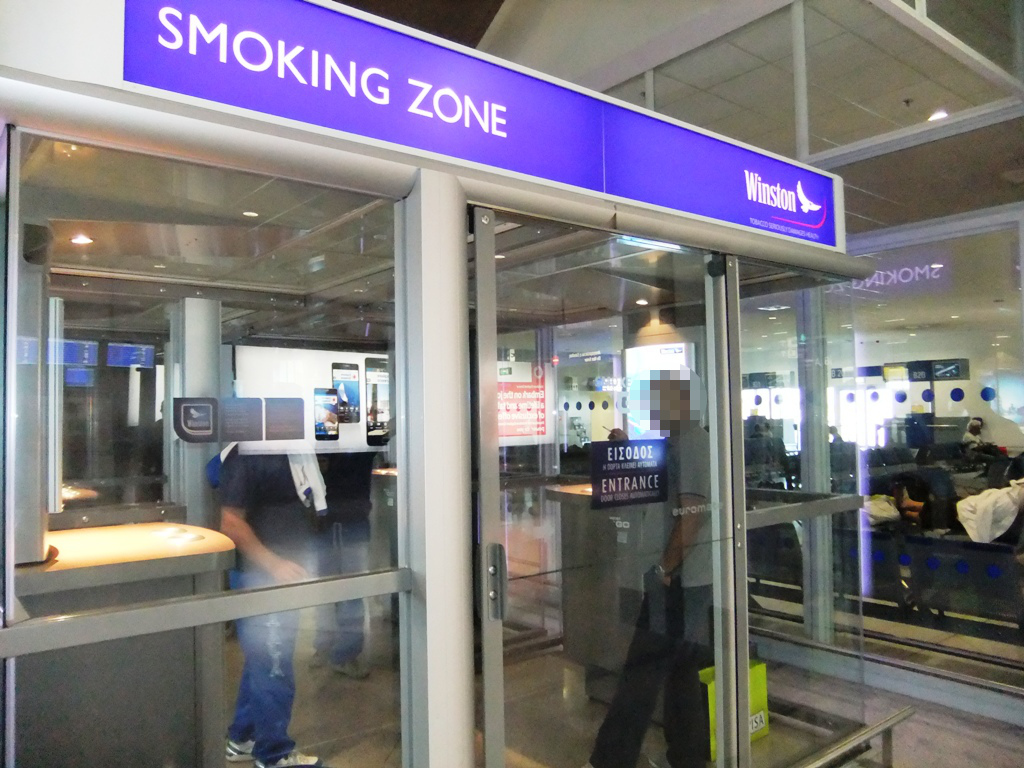
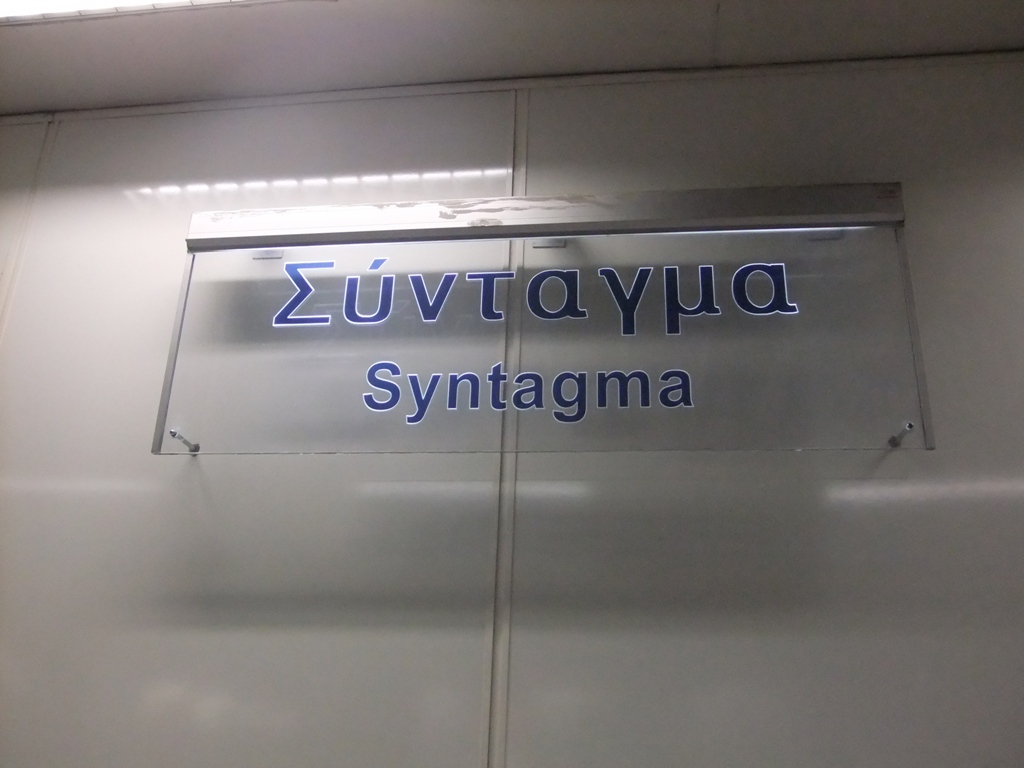
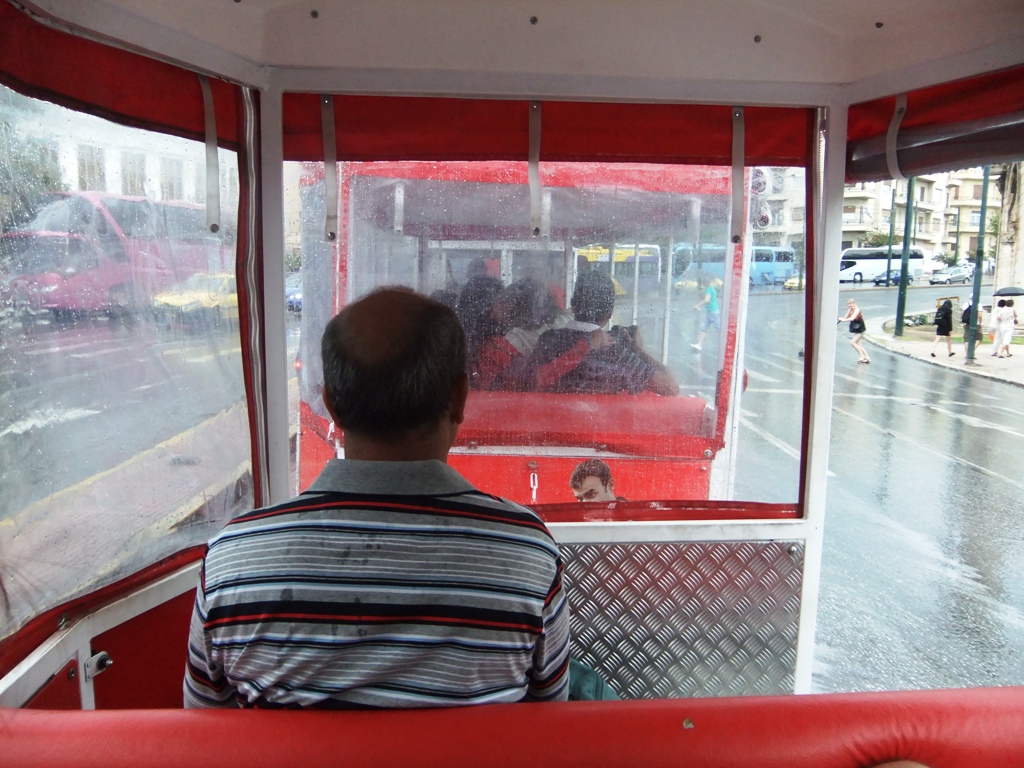
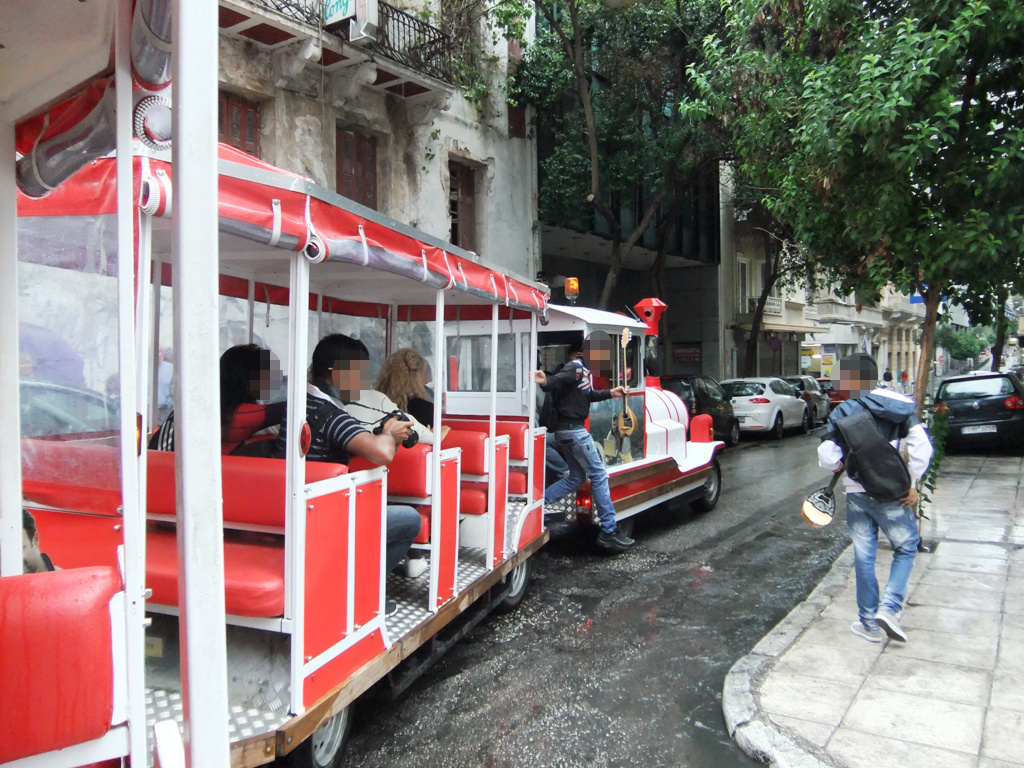
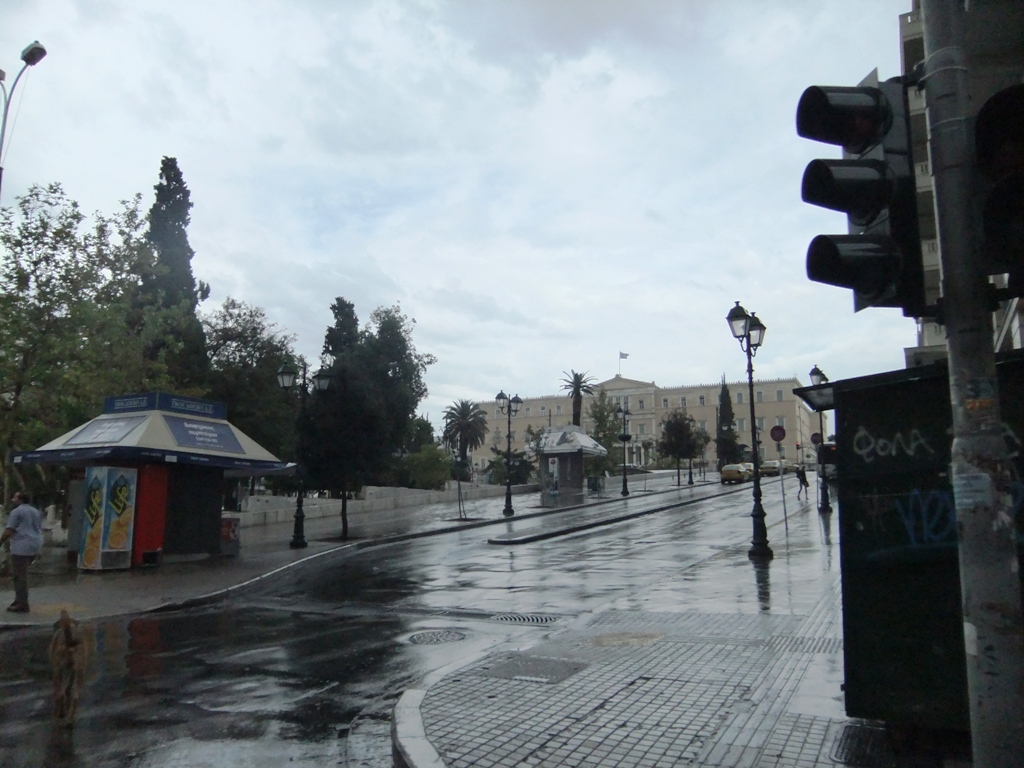




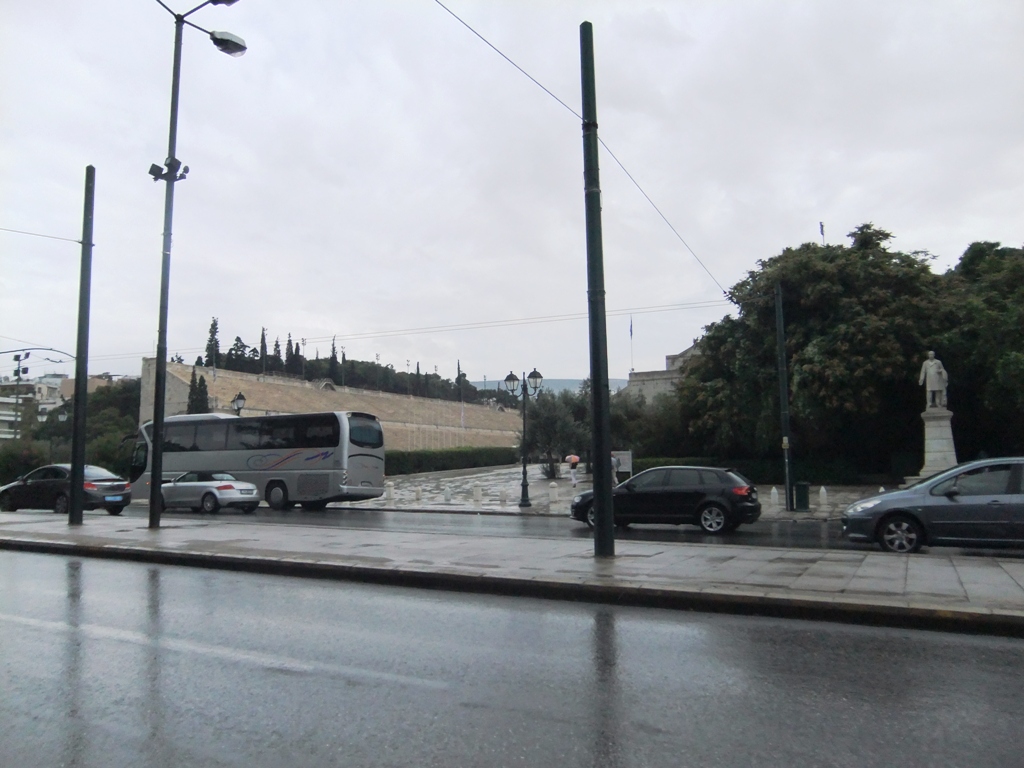

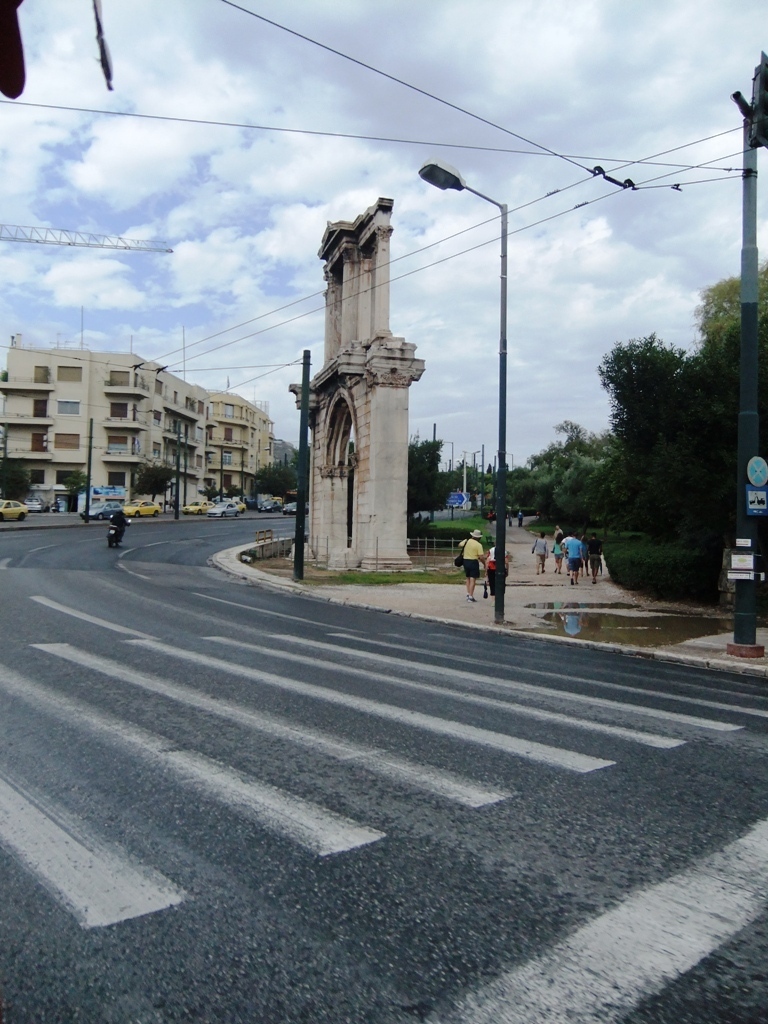
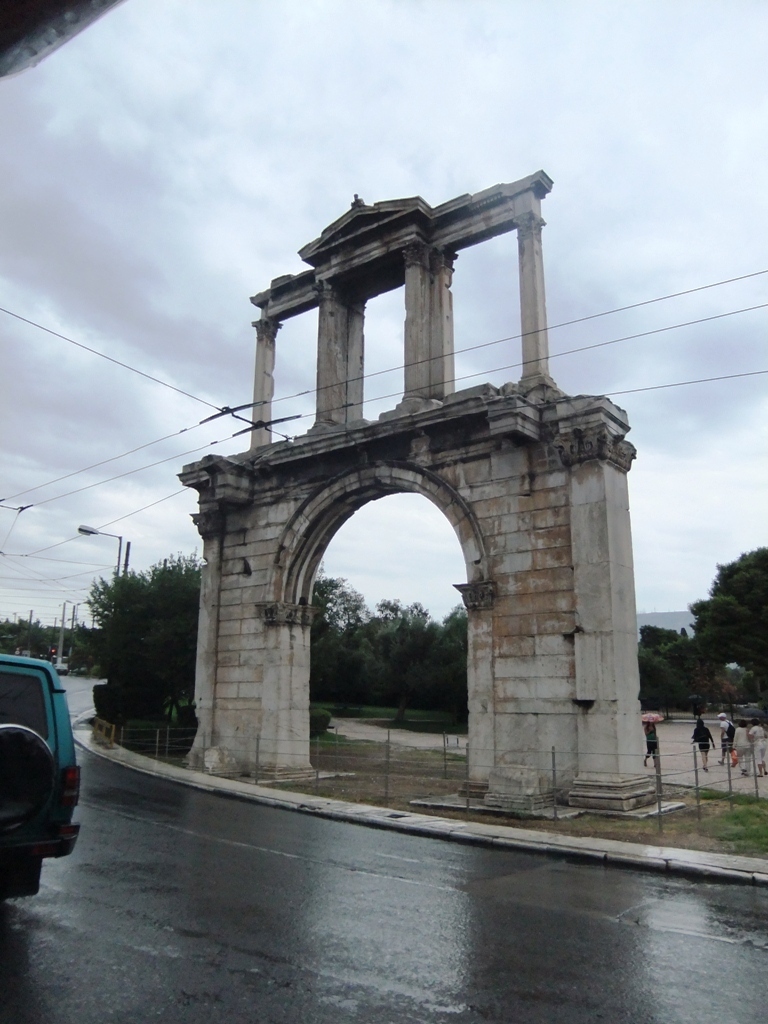
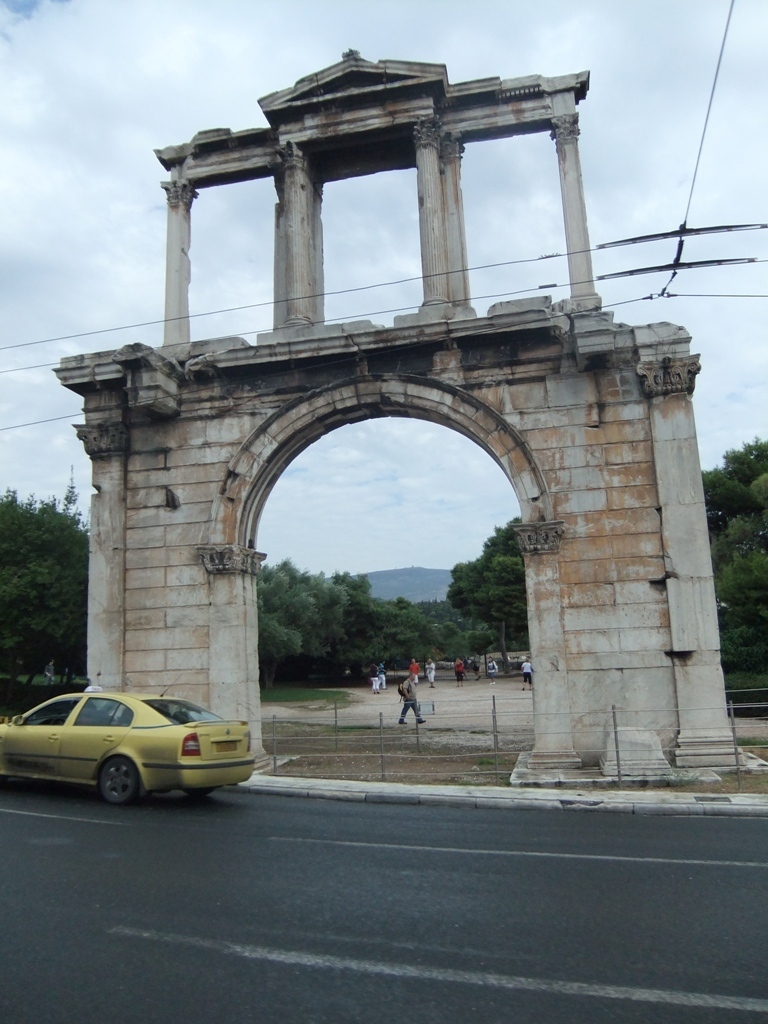

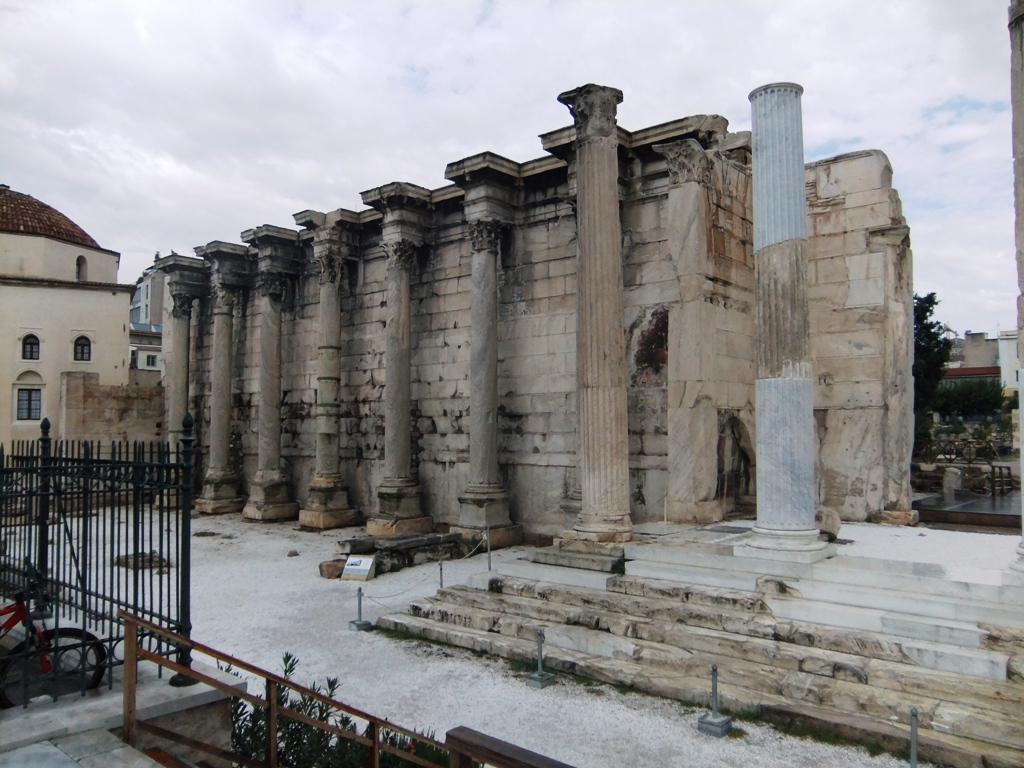
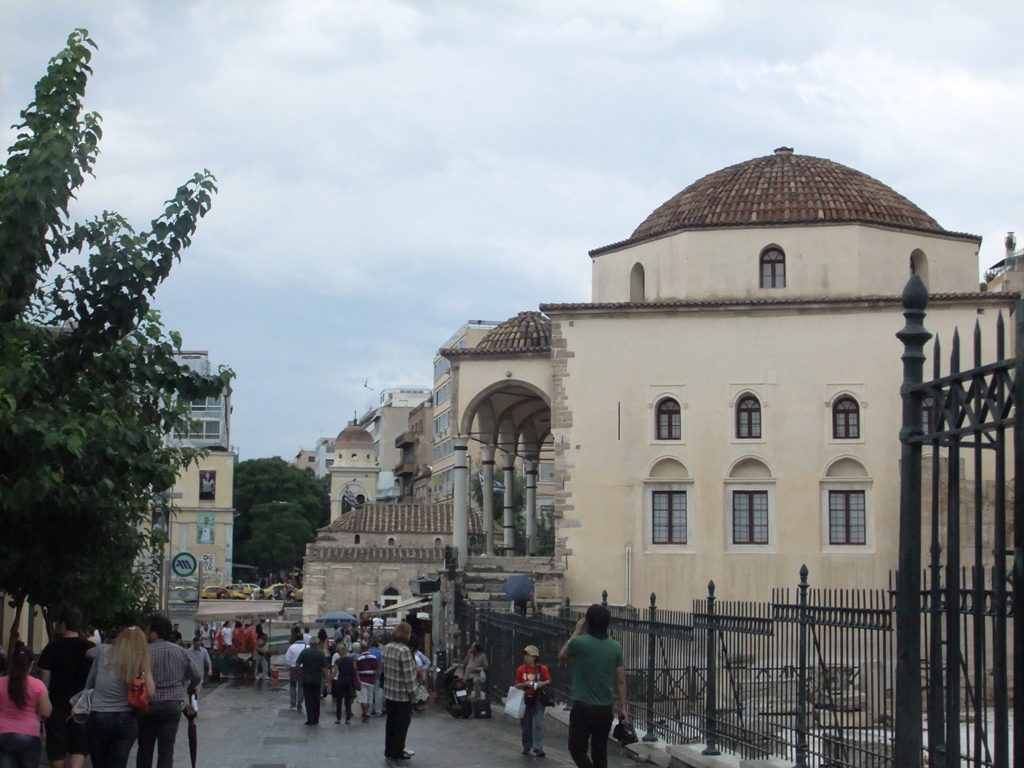
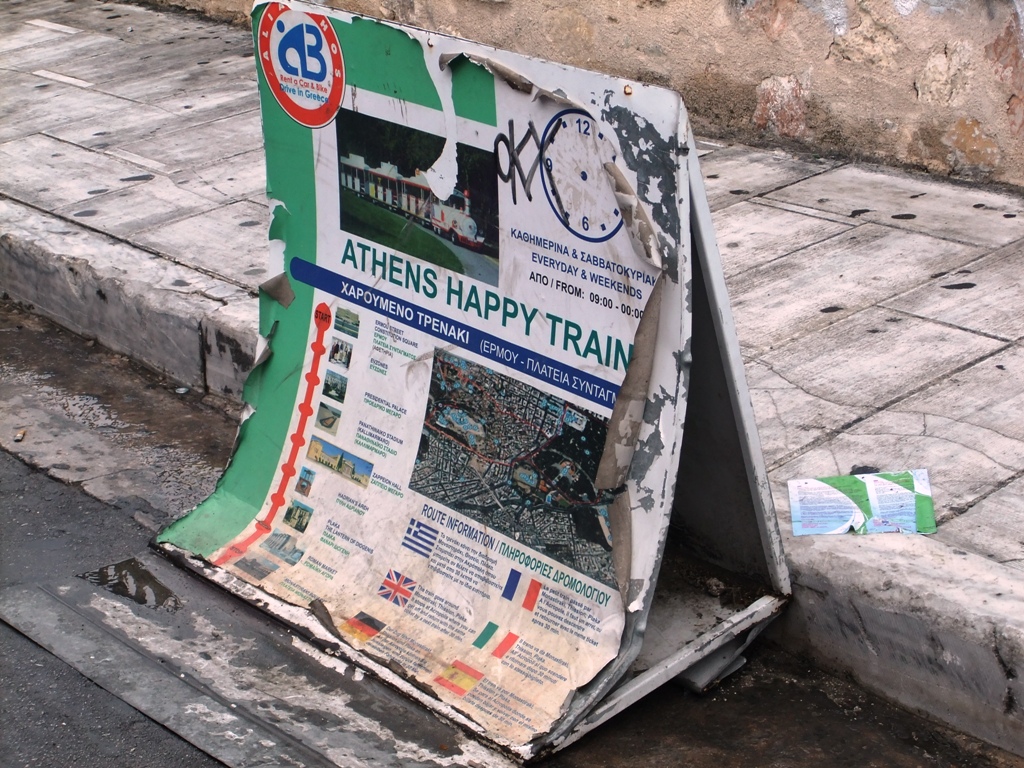
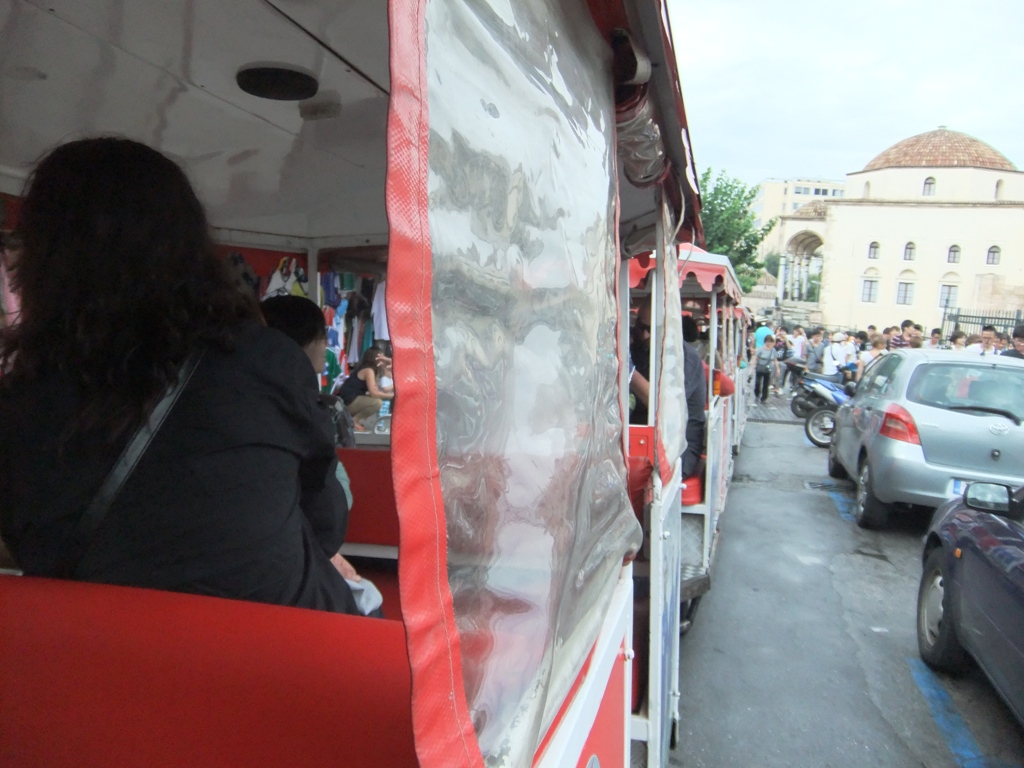
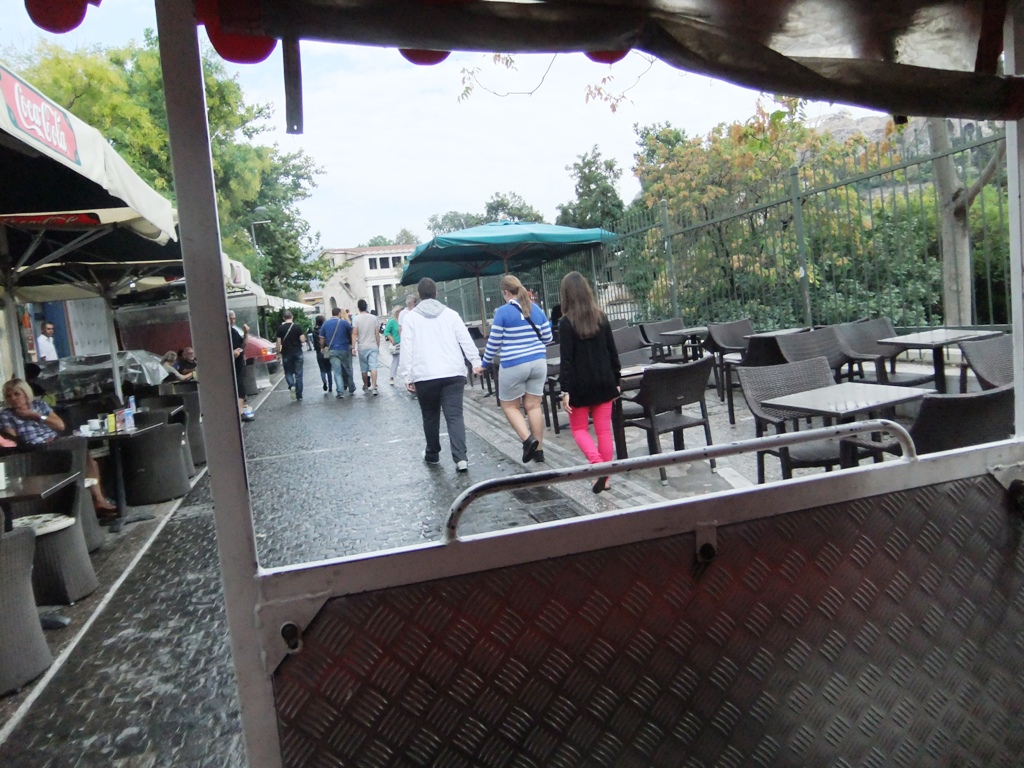


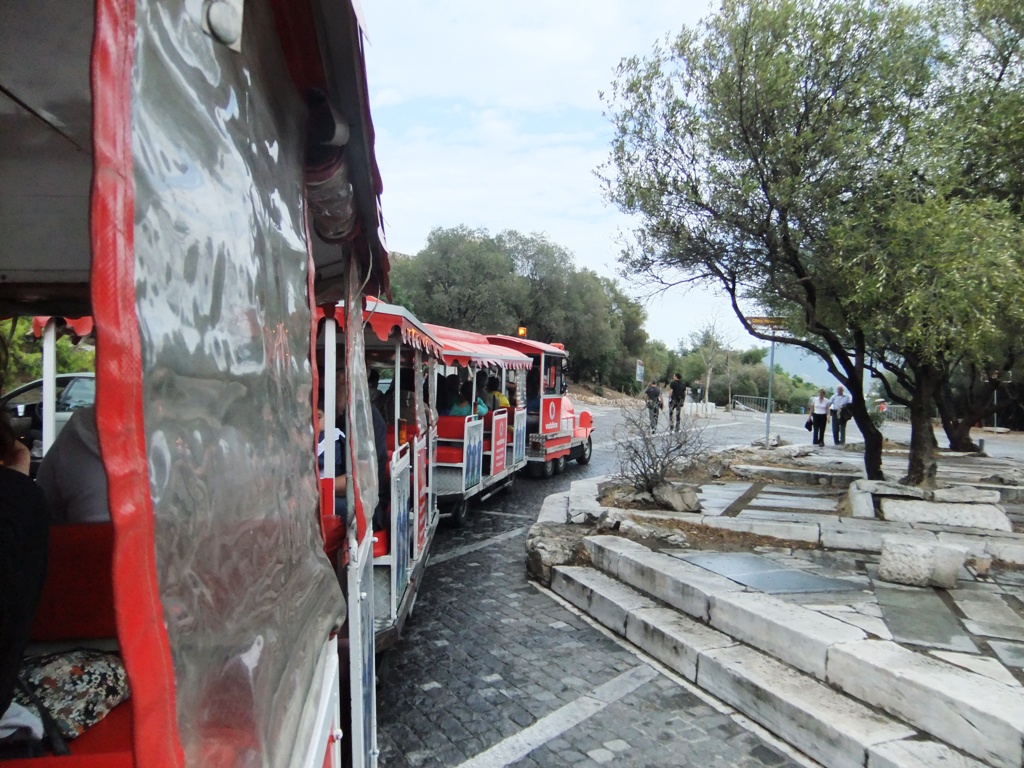



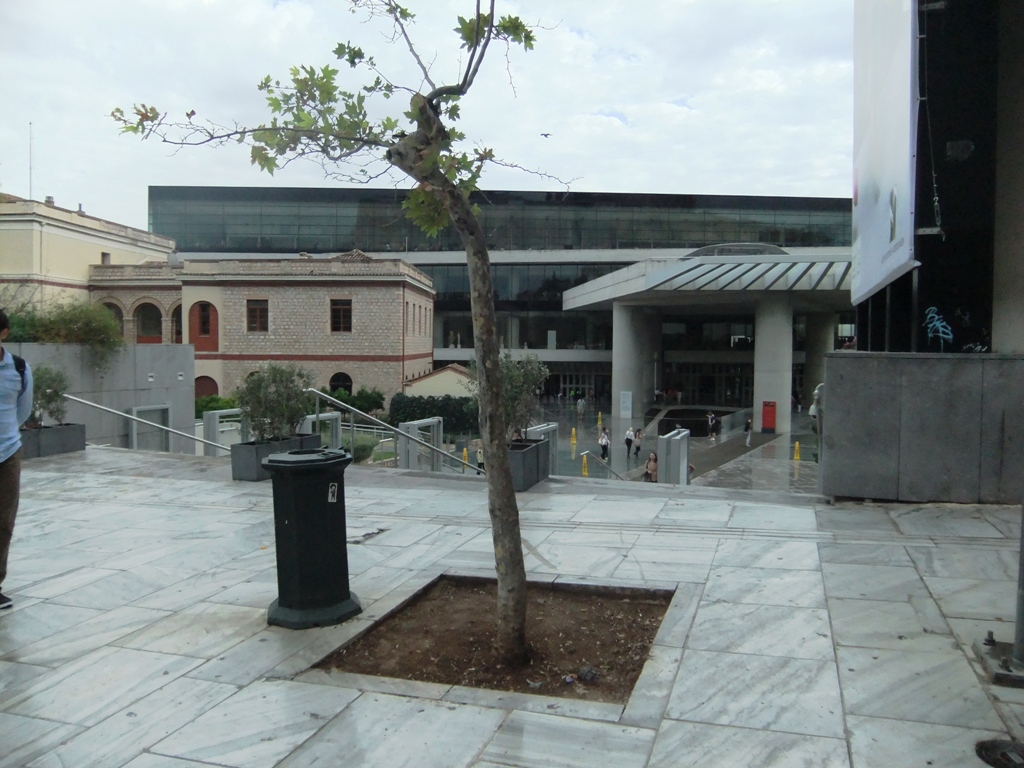
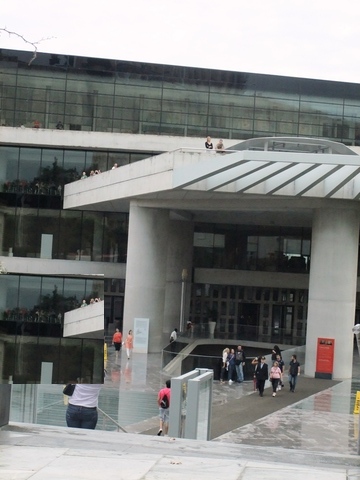


The Happy Train Virtual Tour ha scritto:
Our City Sightseeing tour with the happy train takes in the capital's most famous sights and monuments including Acropolis, Plaka, Zeus Temple, Thission, Monastiraki Square, Ancient and Roman Market, Zappeion, Panathinaiko Stadium, Theatre of Herodes Atticus, Hadrian Arch etc.
Note: After 10.00 p.m. the street of Herodus Atticus is closed by police for security reasons. The route of the Happy Train changes and unfortunately not includes the first five sites of our trip.
Site 1: The Hellenic Parliament and the Constitution Square
The Happy Train starts its tour from the top of Ermou Street in Constitution Square (also known as Syntagma) and after a short navigation in the small roads of the city center, it follows the Vasilissas Amalias Avenue and passes in front of the Hellenic Parliament.
The Hellenic Parliament is the Parliament of Greece, an imposing building located in the Parliament House (Old Royal Palace), overlooking Constitution Square in Athens. The building, a neoclassical three-floor structure designed by Friedrich von Gärtner and completed in 1843, originally served as a palace for the Greek monarchs.
Members of the royal family continued to reside there until 1924, when a referendum abolished the monarchy. The building was then used for many different purposes — functioning as a makeshift hospital and a museum, among other things — until November 1929, when the government decided that the building would instead house the Parliament.
Site 2: The Monument of Unknown Soldier
In the front of the Hellenic Parliament, out guests can view the monument of "Unknown Soldier" with the Evzone soldiers, the members of the Presedential Guard. An amazing ceremony occurs there every 1 hour: "the Change of the Presidential Guard".
If we are lucky to meet this event, the Happy Train stops and our guests can enjoy Evzones performing the changing of their fellow soldiers, taking their places at each side of the monument.
The Tomb of the Unknown Soldier is located at the bottom of a high wall surrounding the Parliament Building. On this wall is a relief that depicts a fallen soldier and it is surrounded by quotations from the famous Pericles' Funeral Oration. To the left and right are further inscriptions that tell of historic battles where Greek soldiers took part, the most recent one in Cyprus in 1974.
The monument was unveiled on 25 March 1932 (Greek Independence Day) during the last government of Prime Minister Eleftherios Venizelos. It is guarded 24 hours a day by two Evzones, members of the Presidential Guard, an elite, specially chosen unit of the Greek Army.
Site 3: The Presidential Palace in Herodes Attikou Street
Leaving the monument of the Unknown Soldier, the Happy Train turns right to Vasilisis Sofias Avenue, where our guests can view the left side Hellenic Parliament and then continues along the Herodes Attikou Street. This street is not only one of the most beautiful roads in the city, but it is also bound up with the political and social life of Greece.
Our guests can enjoy the Presidential Palace, the Prime Minister Mansion, the National Garden. The members of the Presidential Guard are in every corner of the street, and the guests - if lucky - can view the change of the guard in the entrance of the Palace.
The Presidential Palace is an amazing three-story symmetrical, neoclassical mansion that designed by the German architect Ernst Ziller. Ziller became the Official Court Architect under King George I and designed an estimated 700 buildings all over Greece for both official and private use.
The decision to construct the building was taken in 1868 when King George's son, Constantine, was born and the Greek state decided to present him with a private dwelling, when he came of age. Building began in 1891 and was completed six years later in 1897. The building served as the Kings Palace, until the abolition of the monarchy by referendum in 1974.
Site 4: The Panathenaic Stadium (also known as "Kallimarmaro")
At the end of Herodes Attikou Street the Happy Train arrives at the Panathenaic Stadium (also known as Kallimarmaro). This stadium hosted the 1st Olympic Games of the modern era, in 1896 as well as the final of archery and the marathon race finish in 2004 Athens Olympics (following the tradition of the 1st Olympics).
Kallimarmaro Stadium was a small valley that was transformed into a stadium by Lykourgos in 330-329 BC for the athletic competitions of "Panathinea", the greatest festivities in ancient Athens.
Between 140 and 144 AD, Herodes Atticus restored the Stadium, giving it the form that was found at the 1870 excavation: the horseshoe construction with a track 204.07 meters long and 33.35 meters wide. It is believed that the Stadium had a seating capacity of 50,000 people.
The modern times restoration of the Stadium was conducted by G.Averof at the end of the 19th century, for the first Olympic Games that were reborn in 1896. The Stadium was rebuilt with marble from Mt Penteli, the same kind that was used 2,400 years before, for the construction of the Parthenon on the Acropolis. It could now hold over 60,000 spectators.
More
Site 5: The Zappeion Hall
Leaving the Panathenaic Stadium the Happy Train continues to Vasilissa Olga Avenue which was a popular 19th-century boulevard. In this beautiful street, our guests will meet the National Garden and the Zappeion Hall, a beautiful neoclassical building with Corinthian portico, currently being used as a Conference and Exhibition Center for both public and private purposes.
Zappeion Hall was founded by Mr. Evangelos Zappas in the 19th century, in order to revive ancient greek ceremonies and contests together with exhibitions. This is the reason why it was build as near as possible to the Panathinaic Stadium.
Zappeion was used during the 1896 Summer Olympics as the main Fencing Hall. A decade later, at the 1906 Summer Olympics, it was used as the Olympic Village. During the 2004 Athens Olympic Games the Zappeion was used as the Olympic Media Center.
A number of historical events have taken place at the Zappeion, including the signing of the documents formalizing Greece's accession to the European Union on 1 January 1981, which took place in the building's marble-clad, peristyle main atrium.
Site 6: The Temple of Zeus and the Hadrian Arch
At the end of Vasilissis Olgas Avenue the Happy Train turns left to Vasilissis Amalias Avenue and meets two amazing ancient monuments: the Temple of Olymbian Zeus (the largest ancient temple in Greece) and the Arch of Hadrian.
The Temple of Olympian Zeus (also known as the Olympieion), is a colossal ruined temple in the centre of the Greek capital Athens that was dedicated to Zeus, king of the Olympian gods. Construction began in the 6th century BC during the rule of the Athenian tyrant Peisistratus, but it was not completed until the reign of the Roman Emperor Hadrian in the 2nd century AD some 650 years after the project had begun. During the Roman periods it was renowned as the largest temple in Greece and housed one of the largest cult statues in the ancient world.
Nearby is the Arch of Hadrian, a momentual gateway resembling, that spanned an ancient road from the center of Athens to the complex of structures on the eastern side of the city that included the Temple of Olympian Zeus.
It has been proposed that the arch was built to celebrate the arrival of the Roman Emperor Hadrian and to honor him for his many benefactions to the city, on the occasion of the dedication of the nearby temple complex in 131 or 132 AD.
Site 7: Plaka, the old historical neighbourhood of Athens
Moving along Amalias avenue, the Happy Train turns right onto Lysikratous street, towards to Plaka, the picturesque old historical neighbourhood of Athens.
Our guests can explore and enjoy the labyrinthine streets, the neoclassical architecture, the traditional, many museums, ancient and roman sites and amazing view to the hill of Acropolis.
Plaka is built on top of the residential areas of the ancient town of Athens, clustered around the northern and eastern slopes of the Acropolis, and incorporating labyrinthine streets and neoclassical architecture.
Excavations have proven that Adrianou Street is the oldest street in Athens still in continuous use with the exact same layout since antiquity.
The Roman Market with the famous Tower of Winds, the Mosque of Mehmet the Conqueror, the Lysicratus Statue, the Monastiraki Square are some of the sites that you don't miss, as well as the modern Athens tourist market, ideal to buy the best memories of your stay in Athens.
Stop in Site 8: The Ancient Roman Market in Monastiraki
The Happy Train continues to travel through the narrow streets of Plaka until reaches the famous Ancient Roman Market, just a few minutes away from the Monastiraki Square. Our guests can enjoy one of the most beautiful Roman monuments in Athens, build by Julus Cesar and Augustus in the 1st century B.C.
The Roman Market consists of a large, open-air courtyard surrounded by colonnades on all four sides. The main entrance was on the west (the Gate of Athena Archegetis), and there was a second entrance (or propylon) on the east, leading up to a public latrine and the Tower of the Winds.
During the Byzantine period and the Turkish occupation the area was covered with houses, workshops and churches along with the Fethiye Mosque.
In this site the train stops for 15 minutes and our guests can hop-off the train in order to explore the streets of Plaka. Our guests can also use the same ticket if you like to spend your time there and and hop-on in any of the next Happy Trains in the same stop, for the next 2 hours.
Site 9: The Ancient Greek Market and Stoa of Attalos
The Happy Train starts again the tour from Monastiraki and continues along the Andrianou Street, the oldest street in Athens still in continuous use with the exact same layout. Our guest can enjoy the extra-ordinary Ancient Greek Market in the left side (the heart of the Classical Greece culture), the Stoa of Attalos and the Thession as well as a breath-taking view to Acropolis hill and the Parthenon.
The Ancient Market (also known as Ancient Agora) was the heart of ancient Athens, the focus of political, commercial, administrative and social activity, the religious and cultural centre, and the seat of justice. The site is occupied without interruption in all periods of the city's history.
Perikles, Aeschylus, Sophokles, Plato, Demosthenes, Thucydides, and Praxiteles represent just a few of the statesmen and playwrights, historians and artists, philosophers and orators who flourished here during the 5th and 4th centuries B.C., when Athens was the foremost city-state in Greece.
Here you can view many amazing monuments as the Stoa of Attalos, the Temple of Hephaestus (Thession), the Hermes, the Odeon of Agryppa, the Vouleutirion etc, that you haven't miss them.
Site 10: The Temple of Hephaestus (Thission)
During passing the Andrianou Street with Happy Train, our guests can view one of the most famous ancient monuments in Greece: the Temple of Hephaestus (also known as Thission).
The Temple of Hephaestus and Athena Ergane ( also known as the Hephaisteion or Thission), is the best preserved ancient Greek temple. It is a doric order peripteral temple, located at the north-west side of the Ancient Market of Athens, on top of the Agoraios Kolonos hill.
It is built largely of Pentelic marble by Ictinus, the architect of Pathenon during the second half of the 5th century B.C., and carries a lavish amount of sculptural decoration. The Labors of Herakles occupy the east facade, while the labors of Theseus adorn short sections of the long north and south sides. According to Pausanias, the temple housed the bronze statues of Athena and Hephaestos.
From the 7th century until 1834, it served as the Greek Orthodox church of St. George Akamates.
Site 11: The hill of Acropolis
Leaving Thission, the Happy Train turns to Apostolou Pavlou Street and then continues along the Dionysiou Areopagitou Street, with direction to the hill of Acropolis. Our guests can enjoy a breath-taking view to the hill of Acropolis, the wonder of the Parthenon and the ancient Odeon of Herodes Atticus.
The Acropolis of Athens and its monuments are universal symbols of the classical spirit and civilization, are included on European Cultural Heritage list of monuments and forms the greatest architectural and artistic complex bequeathed by Greek Antiquity to the world.
In the second half of the 5th century BC, an exceptional group of artists put into effect the ambitious plans of Athenian statesman Pericles and, under the inspired guidance of the sculptor Pheidias, transformed the rocky hill into a unique monument of thought and the arts.
The most important monuments were built during that time: the Parthenon, built by Ictinus, the Erechtheon, the Propylaea, the monumental entrance to the Acropolis, designed by Mnesicles and the small temple Athena Nike.
Below the hill of Acropolis, beside the Dionysiou Areopagitou Street, is located the amazing ancient Odeon of Herodes Atticus built by the Romans in 161 AD and still used today for classical concerts, ballet, performances of high cultural value. Further on is the Theater of Dionysious the first stone theater and home to Sophocles, Aeschylus, Euripides and Aristophanes. In the end of the same street is located the New Acropolis Museum (2009 - the official opening) that exhibits more than 4.000 artifacts.
Stop in Site 12: The New Acropolis Museum
At the end of Dionysiou Areopagitou Street, exists the New Acropolis Museum, a new and modern building that was constructed in 2009, and exhibits more than 4.000 artifacts from the ancient area of the Acropolis hill.
The Νew Museum was designed with two objectives: the first to offer the best conditions for the exhibition of its exhibits and secondly to be a Museum that welcomes and befriends its visitors. A walk through its galleries is a walk through history – between the masterpieces of the Archaic and Classical periods, but also in the ancient neighborhoods of Athens.
The guests can absolutely visit all the permanent collections of the museum: the Parthenon gallery, the Erechthion, Temple of Nike and Propylaia gallery, the gallery of Archaic Period, the gallery of Hellenistic Period etc.
In this site our guests can hop-off the train in order to enjoy the view to the Acropolis hill or visit the Acropolis Museum. Our guests can also use the same ticket if you like to spend your time there and hop-on in any of the next Happy Trains in the same stop, for the next 2 hours.
Back to starting point
The Happy Train starts again its tour in the historical center, and returns to the narrow streets of Plaka with direction ot the starting point of the tour, the Constitution Square. Our guests explore the labyrinthine streets and enjoy the neoclassical architecture of the buildings until they return bacj in the starting point of the tour, the Constitution Square.
Another amazing 60-minute tour in the historical center of Athens has just finished. We wish you enjoy the tour and we are looking forward to seeing you again in one of our tours

